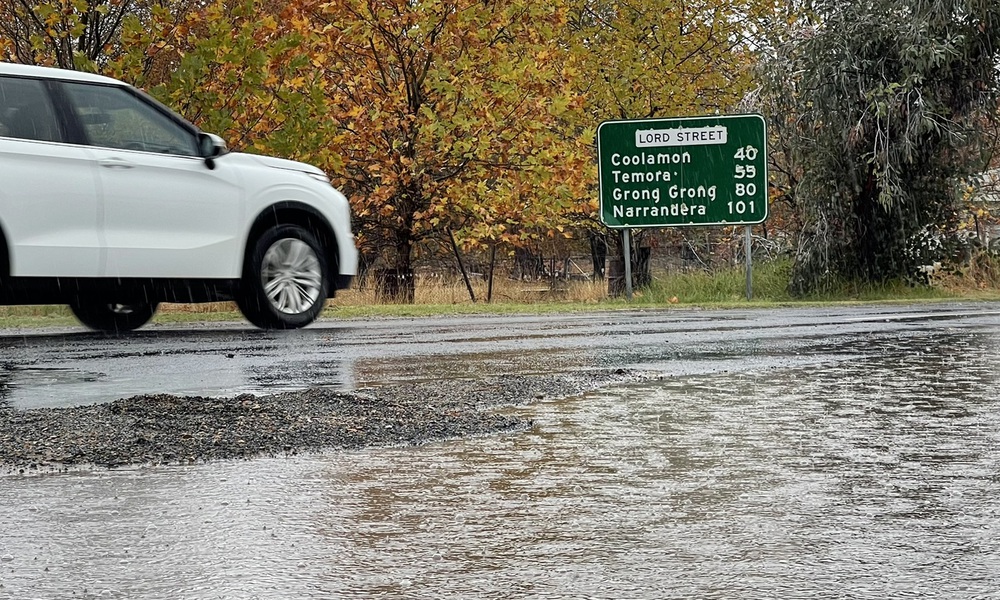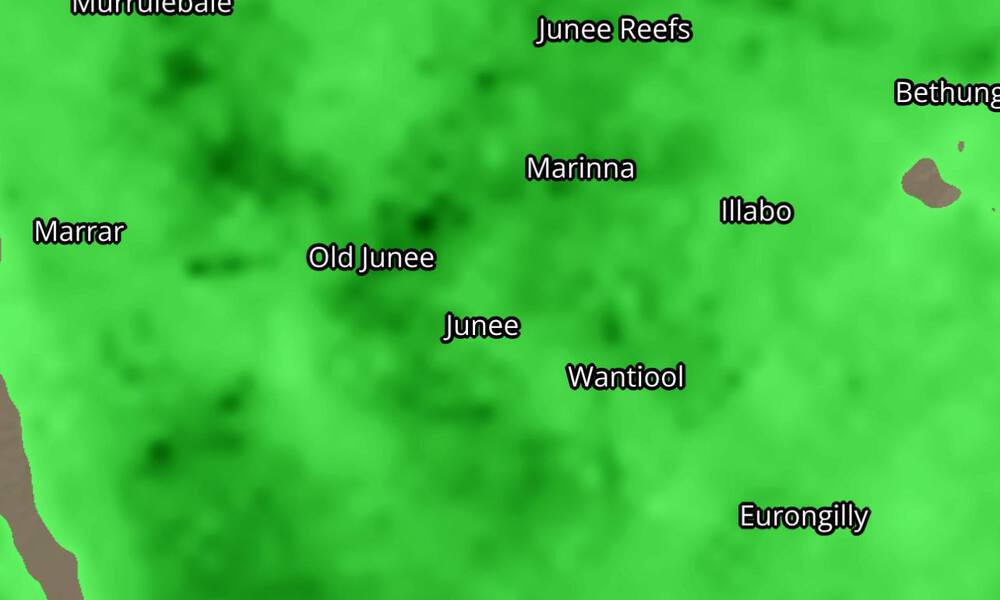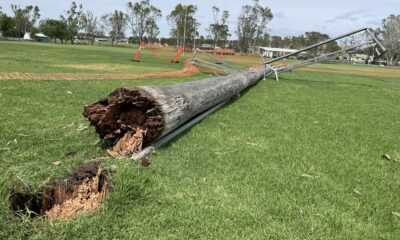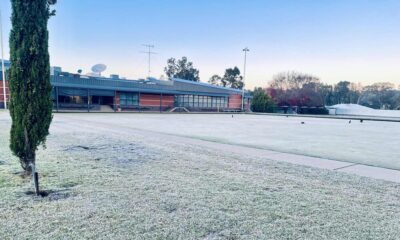Local
Late autumn rain eases drought’s grip in Junee

LATE autumn rain has delivered temporary relief to farmers in Junee, with recent falls soaking parched paddocks and slightly easing the grip of drought across the district.
Steady rain settled over the region on Thursday, May 22, just weeks after the NSW Department of Primary Industries declared more than half of Junee Shire to be officially in drought.
By Friday morning, May 23, accumulated falls of up to 50mm had been recorded across the Shire—the most significant rain event in over 100 days. In the three months prior, Junee had received just 34mm in total.

Steady rain settled over Junee Shire on Thursday, May 22, 2025 | © The Junee Bulletin

WELCOME SIGHT: Radar image showing widespread rainfall at 9:50 am on Thursday, May 22, 2025 | Source: Weatherzone
While the downpour was not enough to break the drought, it has softened its impact for some.
According to the latest DPI data released on Monday, June 2, drought conditions have eased across more than 30 per cent of Junee Shire since May’s drenching, with the official drought footprint falling to 20.8 per cent of the district, down from 54.6 per cent only three weeks ago.
The remaining 79.2 per cent of the Shire is now classified as “drought-affected.”
And more rain could be on the horizon, with the Bureau of Meteorology (BOM) forecasting a further 10 to 25mm across the region this coming long weekend, between Saturday, June 7, and Tuesday, June 10.
The BOM also predicts a 60 to 80 per cent chance of above-average winter rainfall—a glimmer of hope for many in the farming sector.

20.8 per cent of Junee Shire is drought declared, down from 54.6 per cent three weeks ago | Source: NSW DPI
The forecast is welcome news for local producers who have spent recent months purchasing fodder and water to keep their livestock alive.
Others have been forced to reduce herd sizes due to the soaring costs of feed and freight. More than 17,000 cattle and 140,000 sheep passed through the Wagga saleyards in the first two weeks of May alone.
The prolonged dry has also impacted this year’s cropping season. Many farmers have reduced the area planted, with some sowing into dry soil in the hope that rain would follow to trigger germination.
- READ MORE: Pressure Mounts as Drought Bites Deep
According to the Australian Bureau of Agricultural and Resource Economics and Sciences (ABARES), Australia’s 2025–26 winter grain harvest is expected to be up to 8 per cent lower than last year due to dry sowing and reduced plantings.
“Much of the 2025–26 winter crop has been dry sown and will require adequate and timely rainfall during June to allow for crop germination and establishment,” ABARES said in its June crop report.
“Dry autumn conditions are expected to have discouraged some growers from committing to their full planting intentions.”
Downside farmer Ryan Dennis told the ABC he halted his sowing program halfway through, wary of pushing ahead without adequate rain.
He said that while crops have been slower to emerge this year, wheat and barley crops still have time.
“Normal main season canola would hopefully be up around your ankles by now, but we’re just finding [the very first leaves],” he said.
“Everything’s definitely delayed, but the wheat and the barley is not too far out of its [emergence] window.”























